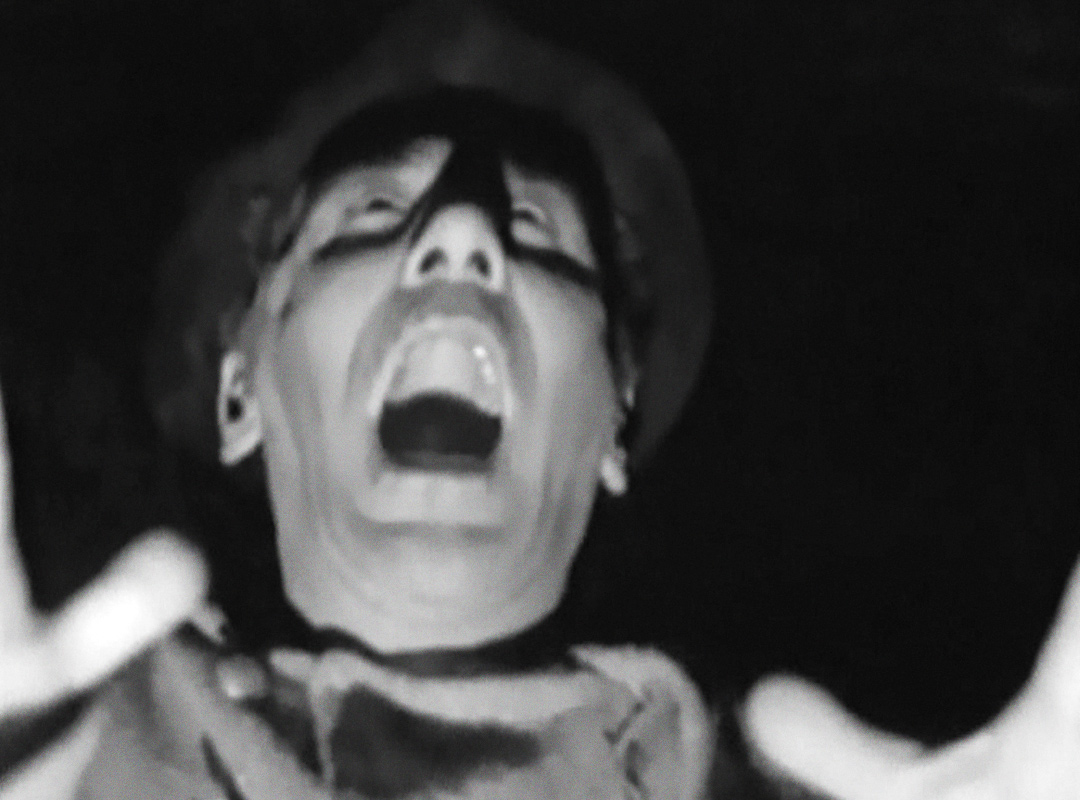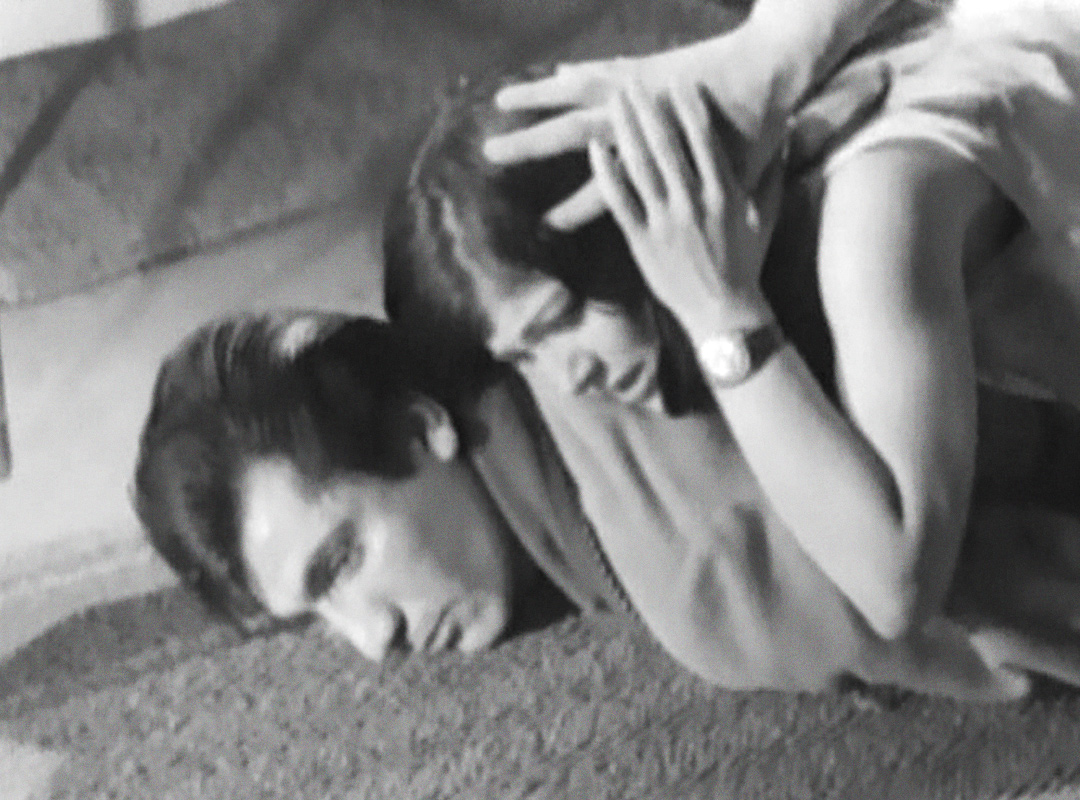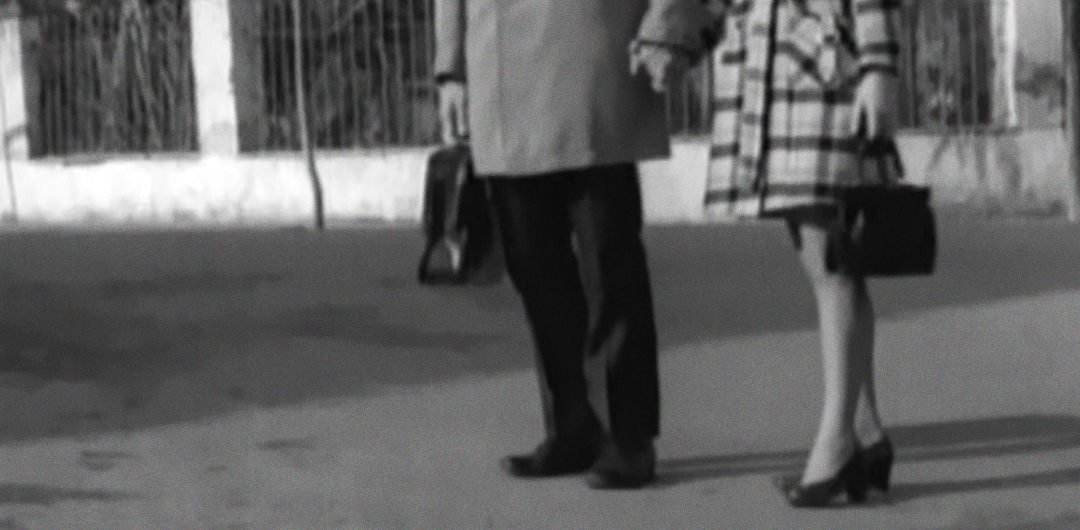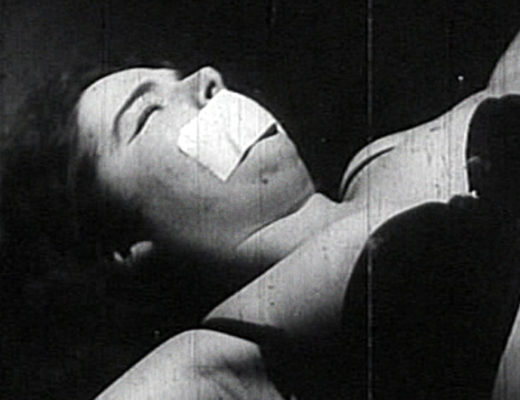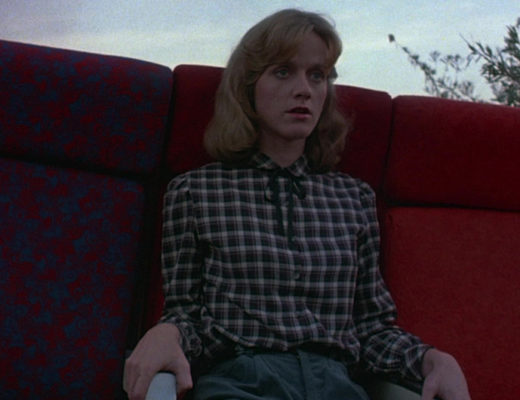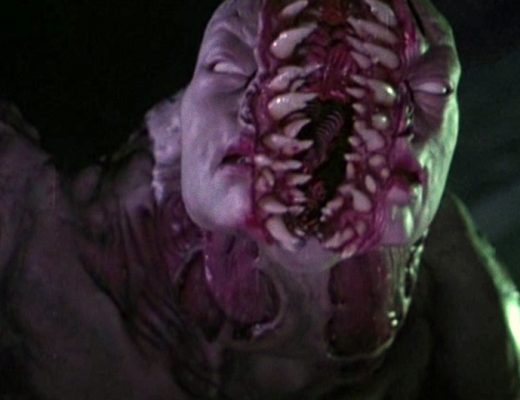After seeing The Dead Don’t Talk, it’s obvious that Strauss’s Also sprach Zarathustra was misused in 2001: A Space Odyssey. The piece sounds much better accompanying three Turkish men while they investigate a bathroom.
Turkish genre movies are not known for their tact, originality, or depth. They’re known for presenting Spider-Man as a serial killer (3 Dev Adam) and adding the Jaws theme to a slasher (Bloody Mansion Death). That’s what makes The Dead Don’t Talk such a surprise. It’s not a direct rip-off. It’s crafted with style. It’s thick with gothic ornaments. But it still utilizes Strauss at inappropriate moments. And it ends with an under-cranked, Keystone Cops-styled gag. The gag is meant to provide comic relief. It is neither comedic nor relieving, but it is Turkish.
We see shots of feet, elbows, horses, faces, wagon wheels, and trees.
A couple arrives at a haunted mansion after traveling by horse-drawn carriage.
The couple explore the empty house. The woman is frightened and wants to leave. The man refuses and tells her not to be so scared. This makes sense because he is Captain America from 3 Dev Adam and Captain America does not scare easily. Doors open and close by themselves. Chanting is heard. A slow-moving servant shows up with a candelabra. He serves them soup. Then, he asks the girl if he can show her something. She agrees. The servant leads the girl through the house. They walk down steps. They walk down more steps. The servant reveals an oil painting of a woman, then begins to sob uncontrollably, saying, “I live for beauties like her!” Suddenly, the couple are sleeping. Captain America hears a noise. Gun in hand, Cap stands in front of a mirror. Then! A ghost appears! The ghost wears a raincoat and a safari hat. He looks like a heavier Bela Lugosi. His laugh is incessant. That might be annoying if his laugh did not sound like what Santa Claus probably sounds like when he’s having sex while watching The Three Stooges.
The couple are murdered by the ghost. We see random scenes of the ghost chasing women through the mansion. We see grave robbers hanging out in a cemetery. A groundskeeper tells a woman: “They say that a ghost comes out on the 15th of every month. Fifteen girls have died!”
Bingo! There’s the plot! And only forty minutes too late.
The Dead Don’t Talk goes out of its way to make no sense. In fact, after the first “episode” with the couple, the movie repeats the same story with different people and even more disconnection. But it isn’t intended to tell a cohesive story. It’s meant to be an exercise in mood. And that’s where this movie succeeds.
As much as movies like The Killing Game and The 10th Victim are visual monuments to living pop-art, The Dead Don’t Talk is a visual monument to living spook-art. Dead falls somewhere between Jean Rollin’s The Rape Of The Vampire, K. Gordon Murray’s Mexican horror imports, and an episode of Dark Shadows with lots of mistakes in it. That slow, dreamy disconnection, the feeling that anything could happen at any time without explanation, is constant. Long shadows cover everything. There’s a slap-back delay over the entire soundtrack. Music jumps from organ-based explosions to psych-pop dirges that sound like quieter France Gall songs from the same era. People’s mouths supply the sounds of baying wolves. There’s never more than three people onscreen at any given time. The forest, the out-of-focus exterior shots of the mansion, the constant ticking of a clock — it all builds to a comforting, nonsensical late night haze. And just when you’re about to be bored out of your mind, the sun comes up. Bela Lugosi’s ghost stares into the camera, starts to melt, and says:
“I am dead. I am soil.”
Captain America’s costume did not appear in this movie. I did not miss it.
